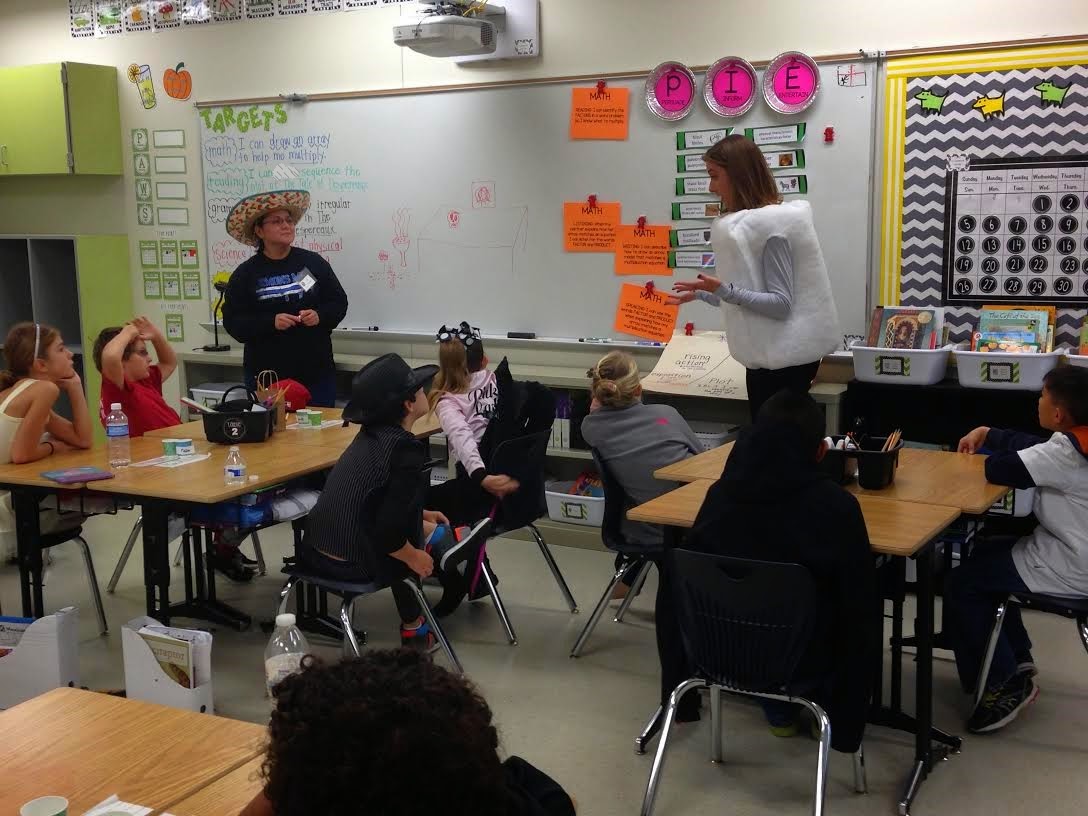Amidst the craziness that is a classroom of students dressed in costume and loaded up with sugar, something awesome happened in Davis land on October 31! One of my student's parents and I co-taught today.
Since the beginning of the school year, the parent, a bilingual immigrant from Mexico, and I have been building a relationship. She visits my classroom every Friday to read to my students in Spanish and help with tasks like filing papers. The kids love showing off their Spanish vocabulary words from morning meeting, and she enjoys spending time in her child's classroom and school.
Really, she's been amazing! She even visits other classrooms in the building, and recently, she began working with a small group of younger ELLs along side our ESL teacher. Up until today, however, she and I hadn't exactly collaborated during instruction. Typically, when she arrives, I stop teaching, she shares a story and some conversation with the students, and then I resume teaching. Today it was different; we taught alongside each other, feeding off one another's insights and strengths. And IT. WAS. INCREDIBLE!
 |
| Co-teaching with a student's parent. Please excuse my marshmallow costume! :) |
While the details of the lesson itself are insignificant compared to its implications for culturally-responsive instruction in my classroom, here's a brief rundown:
She used two dolls--one dressed in a Halloween costume and one, a Mexican American with makeup done like La Calavera Catrina--to hook the students. The dolls had a conversation about Halloween and how it's different from Dia de los Muertos. Next, she put the dolls away and proceeded to share her funds of knowledge about Dia de los Muertos with the class. She drew a diagram depicting the altar, foods, incense, sugar skulls, candles, flower petal paths, etc. associated with the holiday. As she did so, she carefully described each item, discussing its symbolism and importance while sharing her personal stories and memories. I modeled metacognitive strategies aloud, asking clarifying questions to increase student understanding as she explained the significance of the holiday. She did a fantastic job playing along, providing more information and summarizing throughout the lesson. While we taught, my ELLs from Mexico became increasingly engaged and excited to share their own knowledge and experiences about Dia de los Muertos. At the end of the lesson, we created papel picado, a paper streamer craft commonly used to decorate during the holiday.
Overall, this lesson definitely stands out as a highlight from the school year thus far. My students were able to draw connections between what they learned about Dia de los Muertos and their own lives. They even related the holiday's symbolic elements with the symbolism found in text of our current novel study. Watching my ELLs swell with pride and confidence as they served as class experts also made my heart happy!
